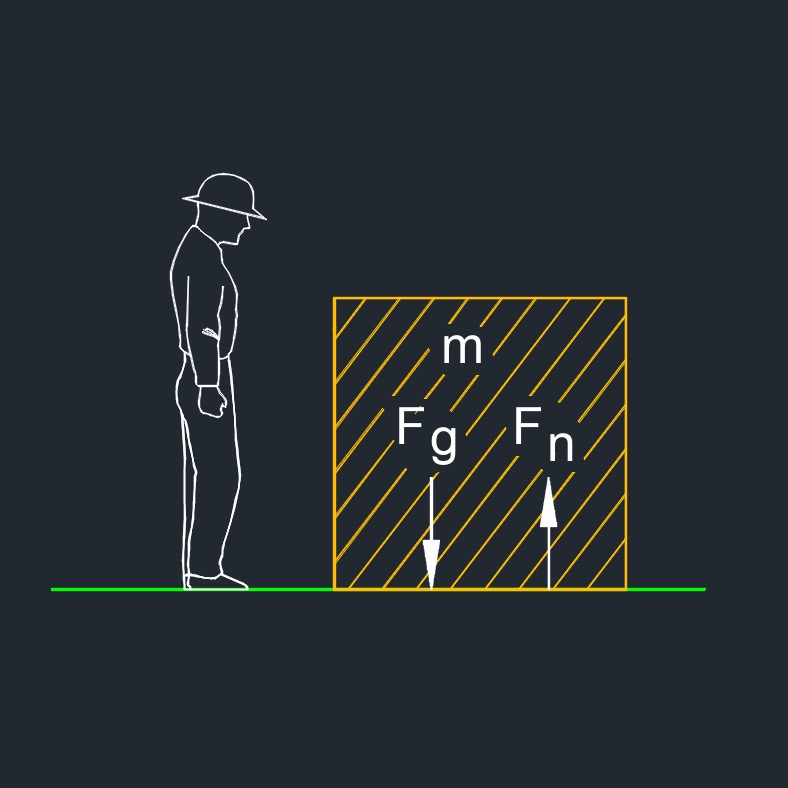Weight Force
Weight Force formula |
||
|
\( W \;=\; F_g \;=\; m \cdot g \) (Weight Force) \( m \;=\; \dfrac{ F_g }{ g }\) \( g \;=\; \dfrac{ F_g }{ m }\) |
||
| Symbol | English | Metric |
| \( W \) = Weight | \( lbf \) | \(\ N \) |
| \( F_g \) = Weight Force | \( lbf \) | \( N \) |
| \( m \) = Object Mass | \( lbm \) | \( kg \) |
| \( g \) = Gravitational Acceleration | \(ft\;/\;sec^2\) | \(m\;/\;s^2\) |

Weight force, also known simply as weight, is the force exerted on an object due to gravity. It is the force that pulls an object downward towards the center of the Earth or any other celestial body with a gravitational field. Weight is a vector quantity, meaning it has both magnitude and direction. Its magnitude is determined by the mass of the object and the strength of the gravitational field it is in. The weight force always acts vertically downward towards the center of the gravitational body. In situations where an object is at rest or in equilibrium, the weight force is balanced by an equal and opposite force, such as the normal force exerted by a supporting surface.
The weight force plays a role in various areas of physics and engineering. It affects the motion and equilibrium of objects, is considered in calculations of forces, and is relevant in areas such as mechanics, dynamics, and structural analysis. It is also important to distinguish weight force from mass, as mass is a measure of the amount of matter in an object, while weight is the force resulting from the gravitational pull on that mass.

